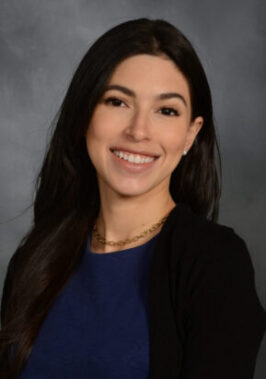Should I Wear a Mask?
Infectious disease experts explain how effective masks are in protecting people from COVID and the latest recommendations on when and how to wear one.

With COVID cases increasing across the United States and RSV and flu seasons beginning this fall, health experts are encouraging people to wear masks – even if they are vaccinated and especially if they are having symptoms.

Dr. Heidi Torres
“Masks are effective at preventing transmission for respiratory infections like COVID, the flu and RSV, well-established studies have shown,” says Dr. Heidi Torres, an infectious disease physician at NewYork-Presbyterian/Weill Cornell Medical Center. “Masks reduce infectious respiratory droplets from being released into the air, which reduces the number of droplets that others might breathe in.”
“We will continue to need protection for ourselves and for others through several means, including the use of face masks and vaccination,” adds Dr. Ole Vielemeyer, medical director of the Division of Infectious Diseases at NewYork-Presbyterian/Weill Cornell Medical Center. “Thus, getting into a safe and sensible face mask routine is a good idea, especially when sick.”

Dr. Ole Vielemeyer
Masks have been proven to be an effective tool to reduce transmission of COVID. One study found that wearing any kind of mask resulted in significantly lower odds of a positive test result. Those who wore the respirators were 83% less likely to test positive for COVID than those who did not mask.
Here, Dr. Torres and Dr. Vielemeyer share with Health Matters what you need to know about wearing a face mask, from how to choose the right one to how to put it on properly.
When to Wear a Mask
You should mask if you feel sick or test positive for a respiratory virus, says Dr. Torres. The Centers for Disease Control and Prevention recommends staying home and self-isolating until you feel better and haven’t had a fever for 24 hours without fever-reducing medication.
- Once you are able to return to your usual activities, you should use a mask around others for the next five days.
- If you test positive for COVID, but never develop symptoms, you should continue to mask for five days while around others.
- If you are exposed to COVID, but have no symptoms, you should test and monitor yourself for symptoms, and consider masking.
Infants and young toddlers should not wear face masks, but children older than 2 should, explains Dr. Vielemeyer. It is very important for adult caregivers to wear masks when asking children to do the same. This way, the child’s mask will more likely stay on.
How to Choose a Face Mask
During low-risk activities like shopping or commuting, Dr. Torres recommends wearing a well-fitting surgical or cloth mask with multiple layers. Both types provide a physical barrier that helps reduce spread of the virus via droplets from your mouth and nose, explains Dr. Vielemeyer, but allows breathing through the fabric.
For optimal protection, high-filtration respirators like the KN95, N95 and KF94 are most protective and prevent inhalation of even tiny airborne particles, adds Dr. Vielemeyer. He recommends them for high-risk situations when there is extended possible exposure, like traveling on planes, subways, or trains; taking care of someone who is sick with COVID; or spending time in a crowded indoor space — or if you are immunocompromised or have a health condition that puts you at high risk of getting sick from COVID.
How to Make Sure Your Mask Fits Well
Masking is a simple intervention that can go a long way when used appropriately, says Dr. Torres. To put on a mask properly, wash or sanitize your hands, ensure the mask covers your nose and mouth completely, and secure it under your chin. If the mask cannot cover both your nose and mouth fully, it is too small, and you will need to size up. If it covers your nose and mouth but with gaps, it’s too large. You can tie knots in the ear loops or twist the ear loops before placing them on your ears to make the mask fit more snugly. Avoid touching the mask while wearing it and remove it by handling the ear loops or ties, then wash or sanitize your hands again.
After use, make sure to either discard your mask or, if it is a cloth mask, put it in a dedicated safe place, such as a sealable bag, until you wash it. If there are several members in the household, make sure you handle only your own mask.
What to Remember Beyond Masking
Wearing a mask is only one means of protecting yourself and others, says Dr. Vielemeyer. Aside from mask use and social distancing when needed, Dr. Torres recommends staying up to date with vaccinations, boosters, and practicing good hand hygiene as essential measures to reduce the risk of infection, protect your health, and the health of others.
Heidi Torres, M.D., is an attending physician of infectious diseases at NewYork-Presbyterian/Weill Cornel Medical Center, where she also serves as a hospital epidemiologist. She is also an assistant professor of clinical medicine at Weill Cornell Medicine. Dr. Torres has expertise in the creation and implementation of infection control policies, ensuring compliance with regulatory standards, and diagnosis and treatment of a wide breadth of infectious diseases. She has specific interests in infection prevention, infection control, epidemiology, and emerging diseases.
Ole Vielemeyer, M.D. is medical director of the Division of Infectious Diseases at NewYork-Presbyterian/Weill Cornell Medical Center and an associate professor of clinical medicine at Weill Cornell Medicine. Aside from his passion for the field of clinical infectious diseases (including travel medicine) and for teaching, his interests lie in developing clinical research projects aimed at improving the transition from inpatient to outpatient care of patients with chronic infections.
